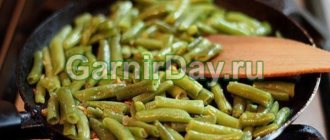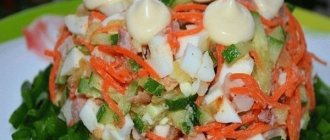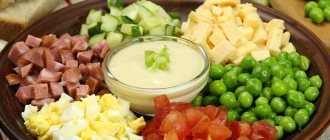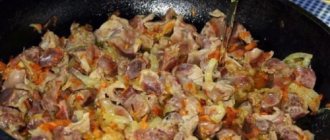Description
Before we talk about what beans are combined with, let’s describe this product a little. Beans are a valuable protein crop, a herbaceous, mostly annual, climbing or shrub plant of the legume genus, common in the warm latitudes of both hemispheres of the Earth. There are about 97 species. The fruits mainly used are beans and pods, but there is also a decorative species with red flowers. Beans, due to their wide geographical distribution, are found in the cuisines of many peoples around the world. For a long time it was considered the food of the poor.
Bean porridge
If you want to prepare bean dishes simply and tasty, porridge recipes are perfect for this purpose. Legumes are simply boiled in water, salted to taste, or added at the end of cooking with fried vegetables, spices, and herbs. You can serve the food on its own, or complement it with meat or fish.
Ingredients:
- red beans – 500 g;
- onion – 1 pc.;
- salt, pepper, oil, herbs.
Preparation:
- The beans are filled with water and left for at least 12 hours.
- Wash the soaked beans, add a portion of clean water, and cook until soft.
- Fry the onion in oil, add boiled beans, grind with a masher or blender, adding salt to taste.
- Ready red bean porridge is complemented with herbs.
Types and difficulties of use
There are many types of beans depending on the size, color and shape of the beans: common beans, black beans, red beans, moon beans, purple beans, spotted beans, small beans and others.
It is widely used in cooking due to its taste, nutrition and health benefits. Beans contain B vitamins, calcium, iron, magnesium and zinc. The pods contain vitamins A and C and calcium. In terms of protein absorption, beans are equal to meat and fish. It is important to know that some varieties of beans can be poisonous when raw!
The product is widely used in folk medicine. So, a decoction of pods and flowers is drunk for heart failure and edema, and for kidney stones. The culture is also used in cosmetology, as it has a healing, rejuvenating, cleansing and restorative effect.
The main difficulties when consuming the product are the long cooking time (for mature beans) and increased gas formation. To avoid consequences and speed up the cooking process, it is recommended to soak the beans from several hours to half a day. At the same time, sugars that are not absorbed in the human body, oligosaccharides, are destroyed. After cooking or canning, the fruits retain their beneficial properties, vitamins, amino acids and minerals.
Bean lobio - classic recipe
Georgian red bean lobio is prepared with an abundance of fresh herbs and aromatic seasonings. An invariable component of the classic recipe is red hot pepper, the amount of which everyone determines according to their taste. Fresh celery leaves can be replaced with cilantro or parsley.
Ingredients:
- red beans – 500 g;
- onion – 200 g;
- vegetable oil – 100 ml;
- garlic – 4 cloves;
- savory and purple basil - 3 sprigs each;
- celery greens – 1 bunch;
- red pepper – 1-2 pcs.;
- coriander, utskho-suneli, Imeretian saffron - 0.5 teaspoon each;
- salt, pepper, oil.
Preparation:
- The beans are soaked, then boiled for 10 minutes, drained and filled with a new portion of water.
- Cook the beans until soft, add some salt at the end of cooking.
- Fry the onion in oil until golden.
- Add beans, garlic, all the spices, red pepper and herbs, heat for several minutes, lightly mashing the beans with a spoon.
Benefit and prevalence
Beans have a mild diuretic property and low calorie content. Due to this, it is often used in diets for weight loss, and is ideal for people leading a healthy lifestyle. The amino acids contained in the fruits strengthen the body, fight atherosclerosis, lower blood pressure, prevent the creation of cancerous tumors, prevent anemia, and due to magnesium and calcium in the composition, they strengthen teeth and bones. Bean-based masks are used in cosmetology. In Ancient Rome, white and powder were made from bean powder.
Beans are common in the cuisines of many countries around the world: Georgia, Armenia, Mexico, Italy, Spain, India, Japan, China, Korea, Ukraine, Poland. This product is used to prepare soups, side dishes, salads, hot and cold appetizers. They add it to stews and even use it in baking.
Azerbaijani hamrashi soup with noodles and white beans
Compound:
- dry white beans – 50 g;
- minced lamb – 0.25 kg;
- dried mint – 2 g;
- wheat flour – 100 g;
- chicken egg – 1 pc.;
- white wine vinegar (6 percent) – 5 ml;
- green onions - 3 feathers;
- fresh cilantro - 3 sprigs;
- salt - to taste;
- water – 0.75 l.
Cooking method:
- Add finely chopped cilantro and green onions to the minced lamb, add salt and stir. Form it into meatballs and put them in the refrigerator.
- Soak the beans overnight in cold water, rinse, cover with fresh water, and boil until soft. Drain off excess liquid.
- Sift the flour and make a well in it. Break an egg into a bowl, add salt, and whisk with a fork. Pour the egg mixture into the flour, knead the dough, put it in a bag and leave for half an hour. Roll out the dough and cut noodles from it.
- Boil the recipe amount of water, salt it, and place the meatballs in boiling water. When they float to the surface, add the beans. After 5 minutes, add the noodles and cook the soup for another 5 minutes. Pour in the vinegar, add the mint, boil the soup for another minute, then remove the pan from the heat.
What does beans go with?
This product is wonderful in a duet with pork, lamb, mushrooms and spices. What goes with vegetable beans? With tomatoes, carrots, onions, garlic and almost all other vegetables. In terms of food “friendship”, legumes are a universal product. They go with everything, being both the basis of a dish and an addition. But it is not customary to combine different varieties into one dish, due to the different cooking times required. Beans are combined with products such as oil (vegetable and butter) and sour cream. These products make a simple, quick and tasty puree.
In the east, in China and Japan, beans, pork and vegetables are considered an excellent combination. But it is also added to jellies, marmalades and candies, and is also used as a base for noodles. In Asia, especially Thailand, green beans cooked in a wok are popular. Local gourmets know: green beans go well with almost all vegetables.
India is generally recognized as the birthplace of beans. Here they prepare vegetarian curry from it, combining it with spicy seasonings.
In recipes of Caucasian cuisine, this legume is found very often in the preparation of lobahashu soup. It goes well with stewed vegetables in aizalan, preparing plaka from white beans and tomatoes, and, of course, in canakhs and lobio.
In Italy, beans are used to make minestrone soup, as an addition to pasta, or in salads. In Latin American countries, beans are included in many dishes: bean burritos, traditional rice and beans, chili con carne soup and others. Without this product it is difficult to imagine Hungarian bograch, Polish bean soup with sausages, or Spanish paella.
In Russia, beans began to be used in cooking in the 18th century. It was added to cabbage soup, stewed, or made into something like a salad with pickled cucumbers. In Ukraine, this type of legume is added to borscht, used as a filling for pies, or simply stewed with pork.
Bean side dish
When studying how you can prepare bean dishes as a side dish in a simple and tasty way, recipes for legumes with vegetables attract special attention. Onions and carrots, tomatoes or tomato paste, and bell peppers will harmoniously complement the taste of the base component. Fresh herbs are always expected in dishes like these.
Ingredients:
- beans – 300 g;
- onions and carrots - 1 pc.;
- sweet pepper – 1 pc.;
- tomato paste – 1.5 tbsp. spoons;
- granulated sugar – 1 teaspoon;
- garlic – 1 clove;
- water – 1 glass;
- butter – 30 g;
- salt, pepper, spices, herbs.
Preparation:
- The beans are soaked for 12 hours, washed, and boiled in a portion of fresh water, adding salt to taste at the end of cooking.
- Onions and carrots are fried in oil.
- Add spices, sugar, garlic, and paste diluted in water.
- Drain the water from the beans and add the beans to the sauce.
- Warm up the green bean side dish on the stove for 3 minutes, serve with herbs.
Capsicum
What goes with green beans? These are unripe fruits of beans used for food; they have a milder taste and cook very quickly. Just like ripe fruits, green beans contain toxic substances. But to neutralize them, five minutes of cooking is enough. These beans are sold raw, frozen or canned and go well with mushrooms, garlic, cream, and soy sauce. Green beans make excellent friends with vegetables (potatoes, sweet peppers, garlic, eggplant, tomatoes, zucchini), meat (especially poultry), eggs, lemon, pasta, and even mushrooms.
Lenten bean cutlets
Bean cutlets are a godsend for a Lenten or vegetarian menu and can completely replace a similar meat dish in terms of nutritional properties. Potatoes added to the composition will qualitatively bind the ingredients and add additional notes to the taste. In addition to onions, you can add chopped herbs to the bean base.
Ingredients:
- beans – 250 g;
- onion – 1 pc.;
- potatoes – 2 pcs.;
- flour or breadcrumbs - 4 tbsp. spoons;
- salt, pepper, oil.
Preparation:
- The beans are soaked for at least 12 hours, after which they are washed and boiled until fully cooked.
- Boil until soft and the potatoes are in their jackets.
- Beans, peeled potatoes and onions are passed through a meat grinder and seasoned with salt and pepper.
- Form cutlets from the resulting mass, bread them in breadcrumbs or flour, fry in heated oil until golden brown on both sides.
Bean paste - recipe
Bean paste is preferably made from thin-skinned beans. In addition to the presented set of ingredients, the composition can be supplemented with carrots poached in oil, other vegetables, mushrooms, tomato pulp or tomato sauce. Delicate and at the same time satisfying pate is served with crackers or fresh bread.
Ingredients:
- beans – 250 g;
- onions – 3 pcs.;
- garlic – 3 cloves;
- salt, pepper, oil, herbs.
Preparation:
- Soak the beans in water for 12 hours, then wash and boil until soft.
- Puree the boiled beans in a blender.
- Add onions sauteed in oil, garlic squeezed through a press, salt, ground black pepper, and again beat the mass with a blender.
- When serving, sprinkle the pate with herbs.
Pkhali beans in Georgian style
Fans of Georgian cuisine will be happy to try bean pkhali. The amount of garlic and pepper is variable and can be changed according to preference. An invariable component is the seasoning hop-suneli, which gives the desired flavor. The appetizer is served with ripe pomegranate seeds and cilantro and parsley.
Ingredients:
- red beans – 500 g;
- walnuts – 100 g;
- cilantro – 1 bunch;
- garlic – 3 cloves;
- hops-suneli – 1 teaspoon;
- lemon juice – 2 tbsp. spoons;
- salt, pepper, pomegranate seeds, herbs.
Preparation:
- The beans are soaked for 12 hours, after which they are boiled until fully cooked.
- Place the beans, nuts, cilantro, lemon juice and all the seasonings, dried in a dry frying pan until fragrant, into a blender container.
- Grind the ingredients to obtain a paste.
- The bean base is used to form oblong flatbreads with indentations into which pomegranate seeds are placed.
- Place the preparations on a dish with fresh herbs and serve.
Bean hummus - recipe
Traditionally, hummus is made from chickpeas. However, nothing prevents you from making a red bean snack that is perfect for this purpose. The secret to excellent taste is beating the bean mass until fluffy and airy, for which you will need a blender. The appetizer is served with slices of fresh cucumbers, sweet peppers, carrots, and celery stalks.
Ingredients:
- beans – 250 g;
- onion – 1 pc.;
- garlic – 3 cloves;
- lime – 2 pcs.;
- oil – 4 tbsp. spoons;
- tomato paste and turmeric - 1 teaspoon each;
- salt and cinnamon - 0.5 teaspoon each.
Preparation:
- The beans are soaked in water for at least 12 hours and boiled until fully cooked and soft.
- Fry onion and garlic in oil.
- Add juice from one lime, cinnamon, turmeric and beans, heat for a minute.
- Puree the mass with a blender, adding the remaining lime juice, paste, and salt.
- Before serving, sprinkle the bean hummus with lime zest.











